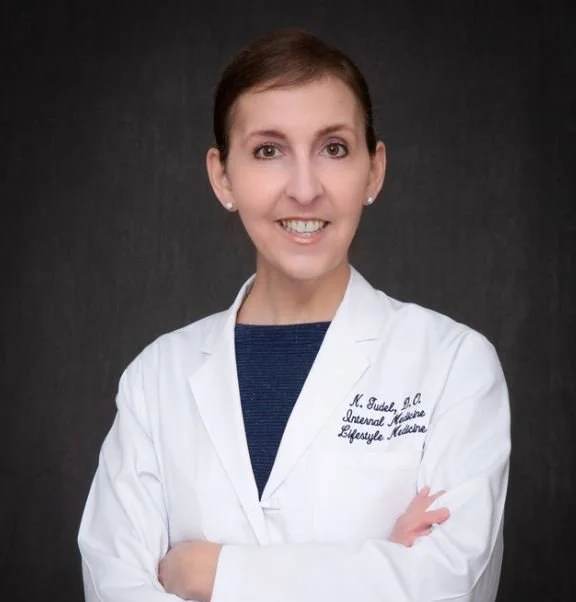Homone Replacement Therapy
The term “hormone replacement therapy” (HRT) had always left a bad taste in my mouth, as I started medical school shortly after the landmark Women’s Health Study had come out in 2002, which showed that while we might be replacing hormones to alleviate symptoms of perimenopause/menopause, we were actually increasing the risk of breast cancer (26% increase), heart disease (29%), stroke (41%) and doubling the risk of blood clots. (1) After that study, physicians lost their enthusiasm for hormone replacement, and the only thing I ever needed to learn about HRT was to stop those medications whenever possible. I then went on to become an Air Force flight surgeon, where the question of HRT never came up, as 95% of my patients were male. So I effectively got a 10-year pass on learning about/dealing with HRT.
Growing up in mainstream medicine, I was vaguely aware of bioidentical HRT, but eyed it with the same skepticism that I had for other presumed snake oils. I have only recently learned that they are in fact, identical to the structure of our own human hormones, and they are made from plants (yams). Like any medication, bioidentical, topically-applied hormones are not completely without risk, but they do not increase the risk of blood clots, stroke and heart disease to the level that conventional, synthetic (they come from horses) HRT does. (2) Much of the risk of conventional, synthetic HRT has now been attributed to the oral progestin (medroxyprogesterone acetate) that they were using, (3) whereas bioidentical oral progesterone has been shown to not increase risk of cardiovascular disease or breast cancer. (4)
I was similarly skeptical of the term “hormone balancing,” but I have since learned a bit more about that as well. And while it would take several books to describe all the hormones and their effects, for the purposes of this blog I will only briefly discuss estrogen. There are three types of estrogen in the body, all of which have different purposes, and with all the estrogenic toxins we encounter on a daily basis, (5) is it any wonder that these can intermittently be out of balance? I have never heard of a toxin that increases testosterone, or DHEA, or progesterone, but please let me know if you have! These balance issues happen particularly in the post-menopausal state (but due to the myriad toxins we encounter, this can happen in the pre-menopausal state as well). Both low and high levels of these hormone subtypes – and any other hormone – can cause issues. As always, there are several foods we can eat in particular (in addition to following a whole plant-based way of eating in general) and lifestyle choices we can make that will help with hormone issues, but it is great to know that there is a safer option than synthetic HRT available to us! If you are interested in learning how diet and bioidentical HRT could work for you consider a consult with a Lifestyle Medicine doctor.
Noah Gudel, D.O. is an Internal Medicine Physician specializing in Lifestyle Medicine. She is currently accepting patients in AL, FL and TN and is available for in person or telehealth visits. Visit https://www.allifestylemed.com/ to learn more and schedule a consult.
References:
1. Rossouw JE, Anderson GL, Prentice RL, et al. Risks and benefits of estrogen plus progestin in healthy postmenopausal women: principal results From the Women's Health Initiative randomized controlled trial. JAMA. 2002;288(3):321-333.
2. L'Hermite M. Bioidentical menopausal hormone therapy: registered hormones (non-oral estradiol +/- progesterone) are optimal. Climacteric: the journal of the International Menopause Society. Aug 2017;20(4):331-338.
3. Stanczyk FZ, Bhavnani BR. Reprint of "Use of medroxyprogesterone acetate for hormone therapy in postmenopausal women: Is it safe?". The Journal of steroid biochemistry and molecular biology. Sep 2015;153:151-159.
4. Holtorf K. The bioidentical hormone debate: are bioidentical hormones (estradiol, estriol, and progesterone) safer or more efficacious than commonly used synthetic versions in hormone replacement therapy? Postgrad Med. 2009;121(1): 73-85.
5. https://nutritionreview.org/2019/05/environmental-estrogens-the-invisible-threat-that- surrounds-us/ (Accessed 5/29/23).


